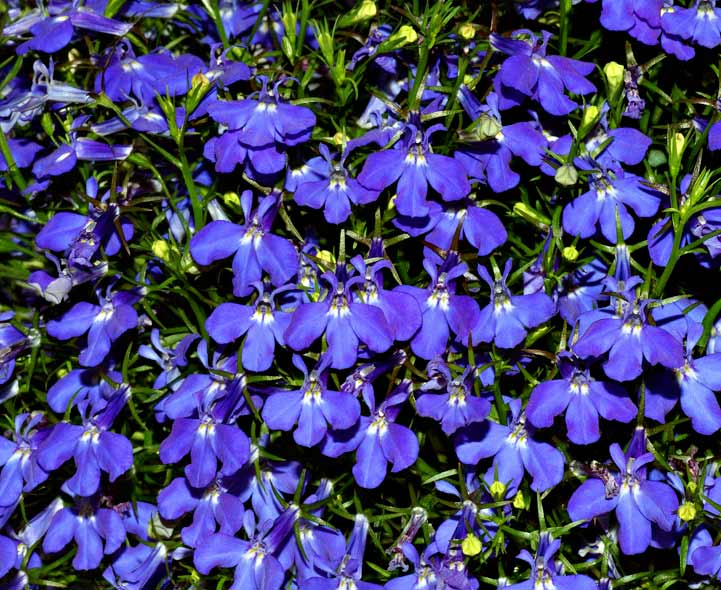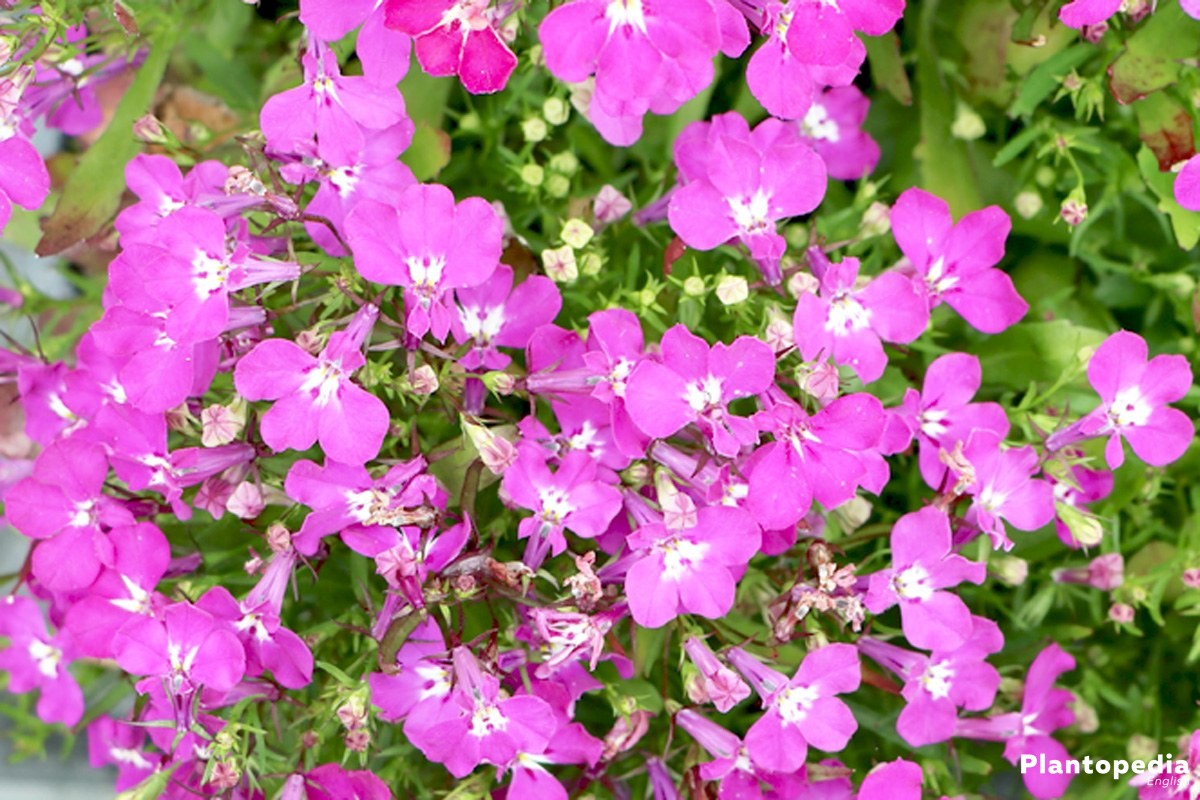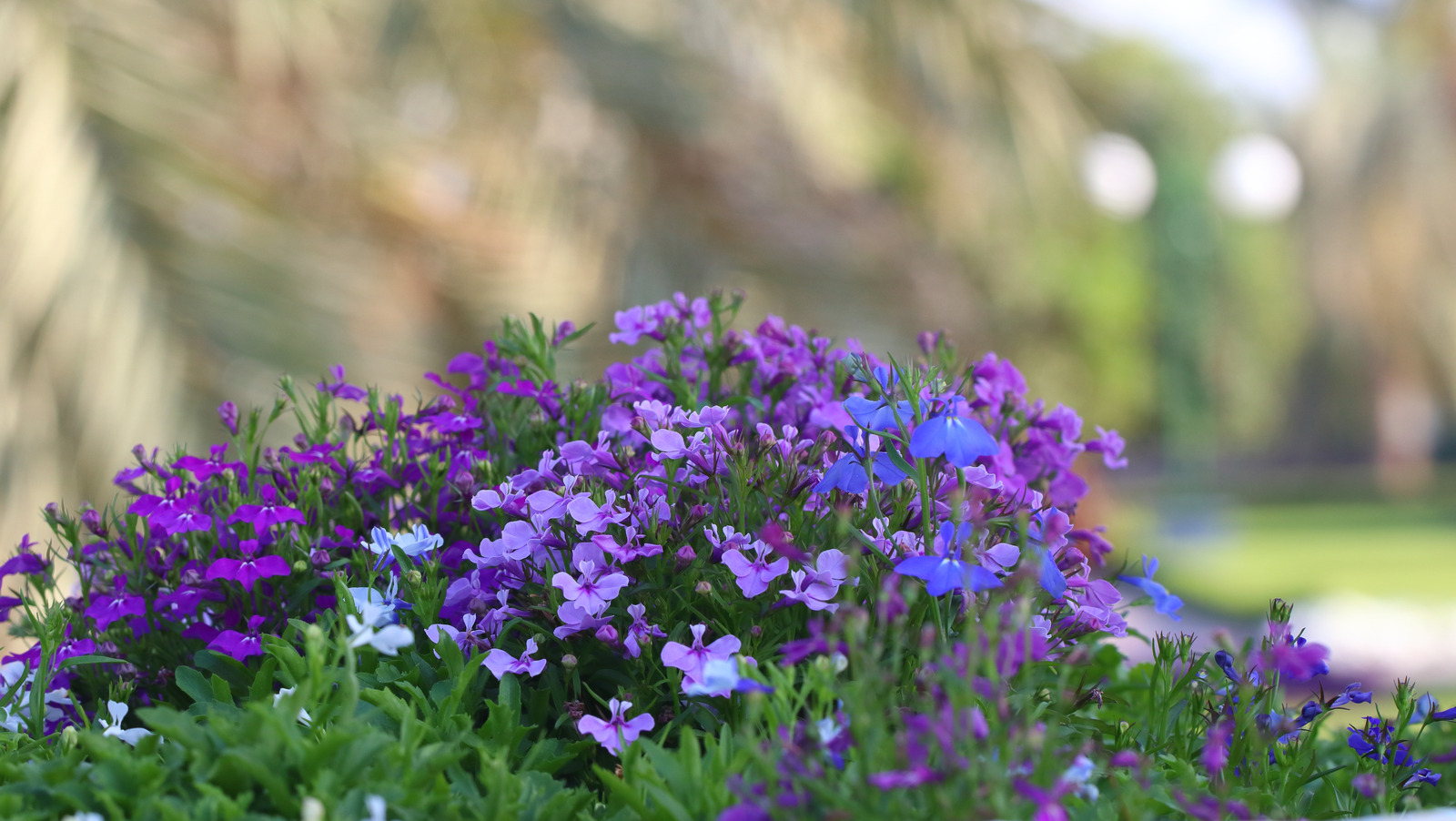What is Lobelia and Why is it a Popular Choice for Gardeners?
Lobelia is a flowering plant that has been a favorite among gardeners for centuries. With its delicate, bell-shaped blooms and vibrant colors, it’s no wonder why lobelia is a popular choice for adding a touch of elegance to gardens, containers, and hanging baskets. But what makes lobelia so special, and how can gardeners make the most of its blooming potential?
One of the reasons lobelia is so well-liked is its ability to thrive in a variety of conditions. Whether planted in full sun or partial shade, lobelia can adapt to different environments and still produce an abundance of blooms. Its relatively low maintenance requirements also make it an attractive option for busy gardeners or those new to gardening.
But the real question on every gardener’s mind is: how long does lobelia bloom? The answer to this question can vary depending on factors such as temperature, light, and water. Generally, lobelia blooms can last anywhere from a few weeks to several months, with some varieties producing blooms for up to six months or more.
Understanding the blooming cycle of lobelia is key to getting the most out of this beautiful plant. By providing optimal growing conditions and proper care, gardeners can encourage longer blooming periods and enjoy the beauty of lobelia for months to come.
In the next section, we’ll take a closer look at the blooming cycle of lobelia and explore the factors that affect its blooming period.
Understanding the Blooming Cycle of Lobelia
The blooming cycle of lobelia is a complex process that involves the coordination of multiple factors, including temperature, light, and water. Generally, lobelia plants bloom in the spring and summer months, with the exact duration of blooming varying depending on the specific variety and growing conditions.
On average, lobelia blooms can last anywhere from 6 to 12 weeks, with some varieties producing blooms for up to 6 months or more. The frequency of blooms also varies, with some lobelia plants producing a single flush of blooms, while others produce multiple blooms throughout the growing season.
One of the key factors that affects the blooming cycle of lobelia is temperature. Lobelia plants typically thrive in temperatures between 65°F and 75°F (18°C and 24°C), with optimal blooming occurring in temperatures around 70°F (21°C). Temperatures that are too high or too low can impact the duration and frequency of blooms.
Light is also an important factor in the blooming cycle of lobelia. Lobelia plants require at least 4 to 6 hours of direct sunlight per day to produce optimal blooms. However, too much sunlight can cause the blooms to fade, so it’s essential to provide some shade, especially in warmer climates.
Water is also crucial for the blooming cycle of lobelia. Lobelia plants require consistent moisture, especially when they are producing blooms. However, overwatering can lead to root rot and other problems, so it’s essential to strike a balance between providing enough water and avoiding too much.
By understanding the blooming cycle of lobelia, gardeners can better appreciate the beauty and complexity of this flowering plant. In the next section, we’ll explore the factors that affect the length of lobelia’s blooming period, including temperature, light, water, and fertilization.
Factors Affecting Lobelia’s Blooming Period
Several factors can influence the length of lobelia’s blooming period, including temperature, light, water, and fertilization. Understanding how these factors impact the duration and frequency of blooms can help gardeners optimize their care and promote longer blooming in lobelia plants.
Temperature is one of the most significant factors affecting lobelia’s blooming period. Lobelia plants thrive in temperatures between 65°F and 75°F (18°C and 24°C), with optimal blooming occurring in temperatures around 70°F (21°C). Temperatures above 80°F (27°C) can cause the blooms to fade, while temperatures below 55°F (13°C) can slow down the blooming process.
Light is another crucial factor in determining the length of lobelia’s blooming period. Lobelia plants require at least 4 to 6 hours of direct sunlight per day to produce optimal blooms. However, too much sunlight can cause the blooms to fade, so it’s essential to provide some shade, especially in warmer climates.
Water is also essential for lobelia’s blooming period. Lobelia plants require consistent moisture, especially when they are producing blooms. However, overwatering can lead to root rot and other problems, so it’s essential to strike a balance between providing enough water and avoiding too much.
Fertilization is also a critical factor in promoting longer blooming in lobelia plants. Lobelia plants benefit from regular fertilization, especially during the blooming season. A balanced fertilizer with a ratio of 10-10-10 (nitrogen-phosphorus-potassium) can provide the necessary nutrients for optimal blooming.
By understanding the factors that affect lobelia’s blooming period, gardeners can take steps to optimize their care and promote longer blooming in their lobelia plants. In the next section, we’ll explore some tips and advice on how to encourage longer blooming in lobelia plants.
How to Encourage Longer Blooming in Lobelia
Encouraging longer blooming in lobelia plants requires a combination of proper care, attention to detail, and a few simple techniques. By following these tips, gardeners can promote longer blooming in their lobelia plants and enjoy the beauty of these flowers for an extended period.
Deadheading is one of the most effective ways to encourage longer blooming in lobelia plants. Deadheading involves removing the spent blooms from the plant, which helps to promote new blooms and extend the blooming period. To deadhead lobelia, simply snip off the spent blooms with a pair of scissors or pinch them off with your fingers.
Pruning is another technique that can help to encourage longer blooming in lobelia plants. Pruning involves cutting back the stems of the plant to encourage new growth and promote more blooms. To prune lobelia, simply cut back the stems to about half their height, making sure to leave at least a few sets of leaves on the stem.
Providing optimal growing conditions is also essential for encouraging longer blooming in lobelia plants. Lobelia plants prefer well-draining soil, full sun to partial shade, and consistent moisture. By providing these conditions, gardeners can help to promote healthy growth and encourage longer blooming in their lobelia plants.
In addition to deadheading, pruning, and providing optimal growing conditions, there are a few other techniques that can help to encourage longer blooming in lobelia plants. These include fertilizing regularly, providing support for tall stems, and protecting the plants from extreme weather conditions.
By following these tips and techniques, gardeners can encourage longer blooming in their lobelia plants and enjoy the beauty of these flowers for an extended period. In the next section, we’ll explore some of the different varieties of lobelia that are known for their longer blooming periods.
Lobelia Varieties: Which Ones Bloom the Longest?
While all lobelia varieties are known for their beautiful blooms, some are more prolific and long-blooming than others. Here are some popular lobelia varieties that are known for their longer blooming periods:
Lobelia erinus, also known as edging lobelia, is a popular variety that blooms for several months. It produces small, delicate flowers in shades of blue, pink, and white, and is often used as a border plant or in containers.
Lobelia x speciosa, also known as cardinal flower, is another variety that blooms for an extended period. It produces tall, upright spikes of bright red flowers that attract hummingbirds and butterflies.
Lobelia ‘Crystal Palace’, a hybrid variety, is known for its long-blooming habit and produces a profusion of blue flowers with white centers. It is a compact variety that grows well in containers and hanging baskets.
Lobelia ‘Regata’, another hybrid variety, blooms for several months and produces a mix of blue, pink, and white flowers. It is a vigorous variety that grows well in gardens and containers.
These are just a few examples of lobelia varieties that are known for their longer blooming periods. By choosing the right variety and providing proper care, gardeners can enjoy the beauty of lobelia blooms for an extended period.
In the next section, we’ll discuss some common challenges that may affect lobelia’s blooming, and provide solutions and advice on how to overcome these challenges.
Common Challenges and Solutions for Lobelia Bloomers
Despite their beauty and popularity, lobelia plants can be susceptible to certain challenges that can affect their blooming. Here are some common issues that may affect lobelia’s blooming, along with solutions and advice on how to overcome these challenges:
Pests: Aphids, whiteflies, and spider mites are common pests that can affect lobelia plants. To control these pests, use neem oil or insecticidal soap, and make sure to inspect your plants regularly.
Diseases: Root rot, leaf spot, and powdery mildew are common diseases that can affect lobelia plants. To prevent these diseases, make sure to provide good air circulation, water your plants carefully, and avoid over-fertilizing.
Environmental stressors: Extreme temperatures, drought, and excessive rain can all affect lobelia’s blooming. To mitigate these stressors, provide your plants with protection from extreme weather conditions, and make sure to water them regularly.
Soil quality: Poor soil quality can affect lobelia’s blooming. To improve soil quality, add organic matter such as compost or well-rotted manure, and make sure to fertilize your plants regularly.
By being aware of these common challenges and taking steps to prevent them, gardeners can help to promote healthy growth and blooming in their lobelia plants. In the next section, we’ll provide guidance on how to care for lobelia plants to extend their blooming season.
Extending the Blooming Season with Lobelia Care
To extend the blooming season of lobelia plants, it’s essential to provide them with proper care. Here are some tips on how to care for lobelia plants to promote longer blooming:
Watering: Lobelia plants require consistent moisture, especially when they are producing blooms. Make sure to water your plants regularly, but avoid overwatering, which can lead to root rot and other problems.
Fertilizing: Fertilizing your lobelia plants regularly can help to promote healthy growth and blooming. Use a balanced fertilizer that is high in phosphorus, which will help to promote blooming.
Protecting from extreme weather conditions: Lobelia plants can be sensitive to extreme weather conditions, such as high winds, frost, and excessive heat. Make sure to provide your plants with protection from these conditions, such as bringing them indoors during the winter or providing shade during the summer.
Deadheading: Deadheading is the process of removing spent blooms from your lobelia plants. This will help to promote new blooms and extend the blooming season.
Pruning: Pruning your lobelia plants regularly can help to promote healthy growth and blooming. Make sure to prune your plants after they have finished blooming, and remove any dead or damaged leaves or stems.
By following these tips, you can help to extend the blooming season of your lobelia plants and enjoy their beautiful blooms for longer. In the next section, we’ll summarize the key points discussed in this article and emphasize the importance of proper care and attention to detail in promoting longer blooming in lobelia plants.
Conclusion: Enjoying the Long-Lasting Blooms of Lobelia
In conclusion, lobelia is a beautiful and versatile flowering plant that can add a pop of color and vibrancy to any garden or container. By understanding the blooming cycle of lobelia, the factors that affect its blooming period, and how to care for the plants, gardeners can enjoy the long-lasting blooms of lobelia for an extended period.
Proper care and attention to detail are essential in promoting longer blooming in lobelia plants. By providing optimal growing conditions, deadheading, pruning, and protecting the plants from extreme weather conditions, gardeners can help to extend the blooming season of their lobelia plants.
Additionally, choosing the right variety of lobelia can also impact the length of the blooming period. Some varieties, such as Lobelia erinus and Lobelia x speciosa, are known for their longer blooming periods and can provide a longer display of color in the garden.
By following the tips and advice outlined in this article, gardeners can enjoy the beautiful blooms of lobelia for an extended period and add a touch of elegance and sophistication to their garden or container.
Remember, with proper care and attention to detail, lobelia plants can provide a long-lasting display of color and vibrancy, making them a great addition to any garden or container.







